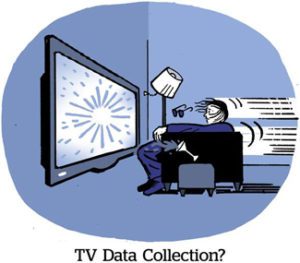Measurement companies that help track outcomes are making it rain.
On Thursday, CTV performance advertising company tvScientific announced a $20 million Series A led by Norwest Venture Partners, bringing the company’s total funding to $21.5 million (including the seed round).
The investment also includes financial commitments from NBCUniversal, Hearst Ventures and Comcast, tvScientific CEO Jason Fairchild told AdExchanger.
Just two days ago, VideoAmp went public with its acquisition of Elsy, an analytics platform that advertisers can use to optimize their media investments toward business outcomes.
For decades, most TV advertisers were satisfied with reach. But now, more ad buyers want to know what actions those TV exposures led to in the real world.
As a “pandemic company” – it was founded in 2020 – tvScientific had a front-row seat to media fragmentation and changing consumption habits. Its technology is focused on measuring CTV performance and helping advertisers bring lower-funnel metrics into their TV buying by emulating digital campaign optimization.
TvScientific also supports media buying.
Automation is the next big item on its road map. The company hopes to fully automate its two self-proclaimed specialties: measurement optimization and campaign activation.
Currently, Fairchild estimates about 40% of the company’s existing functionalities are fully automated. By the end of this year, he expects tvScientific to double that number.
Sharing is caring
Data platforms that don’t support media activation tend to lean on media-agnostic positions as a value prop because avoiding inventory sales reduces the potential for a conflict of interest on either the buy or the sell side.
But tvScientific takes the “opposite approach,” Fairchild said, by supporting media buying and activation. Doing both puts the company in a good position to offer advertisers more granular campaign reporting down to log-level exposure and time stamps for ad impressions, he said.
Other data platforms that provide measurement reporting run on an arbitrage model, meaning “they don’t share all of the underlying data with advertisers,” said Fairchild, who argued that this level of transparency is essential in order to woo digital marketers to CTV.
The other must-have is control.
Ticket to attribution
Because both upper- and lower-funnel advertisers are flocking to CTV, a “one size fits all” approach to attribution won’t work. TvScientific allows clients to set their own attribution windows and share data with other third-party marketing platforms.
The lack of control and transparency available in CTV present a unique set of attribution challenges compared with other over-the-top channels like viewing that happens on a phone or a computer.
As flawed as last-click attribution is, it’s completely moot when it comes to television, Fairchild said, because “you can’t click on a TV” let alone complete a purchase through a TV screen. (Not yet, at least.)
Instead, CTV attribution mainly involves tracking ad exposures to activities on other screens.
TvScientific takes a deterministic approach to connect the dots between TV ads and the outcomes they drive by tying IP addresses and device IDs to “causal” actions, such as search, sign-ups, app downloads and even foot traffic, Fairchild said.
On the activation front, tvScientific then allows clients to transact on their metric of choice, including cost per app install, cost per website visitor or cost per sale.
The idea is to bring an outcome-based, digital mentality to TV measurement.
But CTV has a challenge to contend with that not all digital channels do: inventory scarcity.
Building the CTV bridge
Digital inventory is generated online by billions of social and search inquiries, whereas CTV inventory is much more finite and concentrated to, say, 500 or so advertisers, Fairchild said. And these 500 advertisers make up “[roughly] 80% of the $72 billion TV advertising market,” he noted.
If you’re a glass-half-full sort of person, this represents a concentrated pool of potential.
“Even if we only get the top 10% or 20% of [digital] marketers over to TV, it has the potential of doubling the size of the TV advertising market,” Fairchild said.















